Korok Seeds: Meaningful Play in The Legend of Zelda: Breath of the Wild
By gamer_152 2 Comments
Note: The following article contains moderate spoilers for The Legend of Zelda: Breath of the Wild.
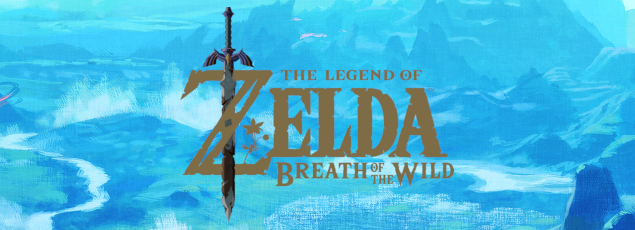
We tend to be more attached to the things we create rather than the things we're given. They say you enjoy the meal you prepare yourself over the one you're served. People who practice art, woodwork, or gardening see value in the objects they brought to life with their own two hands. Our affinity for the products of our work can explain the recent movement of games which emphasise player-created objectives and items over those simply assigned to the user.
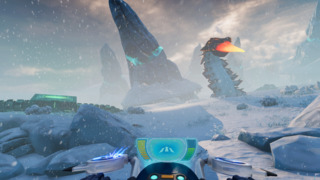
Crafting systems exploded in popularity among developers in the 2010s and star in varied and acclaimed gameplay experiences like The Witcher 3, Far Cry 5, Subnautica, and ARK: Survival Evolved. And some games empower us to construct the mechanisms or buildings we'd like to see in the world, such as Rust or Besiege. Entertainment software is also increasingly enabling players to pick their goals, from the survival and engineering games above to titles like Outer Wilds, Stardew Valley, Dark Souls, and plenty of others.
But you may notice patterns in how the above games incorporate player creation. We can divide the titles into two camps:
- Those that tightly restrict what the player gets to make or set. These are usually architected for a general audience (e.g. The Witcher or Far Cry).
- Games that allow the player a lot of freedom but are inscrutable to plenty of audiences because they are ruthlessly demanding (e.g. Rust or Outer Wilds).

Video game systems tend to be highly complex, especially in multi-faceted genres like survival, MMORPGs, and action-adventures. If the player is to fix their own goals and manufacture their own inventory, they need to take on part of the designer's traditional role. That entails understanding those complex systems, which comes with a high cognitive load. Developers of such titles can avoid overwhelming the player with that complexity by allocating them items and goals, as opposed to forcing the player to work out what resources and objectives it would be enjoyable and efficacious to pursue.
Before 2017, The Legend of Zelda series was the picture of designer-directed play. It was sherpaing players up a linear trail of quests, often dragging them into dungeons where carefully placed prize boxes decided which goodies they'd next get their paws on. The landmark progress gates in the campaigns were locks that audiences had to open with specific items: items only awarded at the conclusion of mainline missions. 2017's Legend of Zelda: Breath of the Wild starts by giving you the low-down on some of its rules. And once you make it beyond its doorstep, you might expect to encounter the numbered dungeons and explicit instructions of old. Instead, Nintendo abandons you in a sprawling, open garden with just that smidgen of advice to guide you.
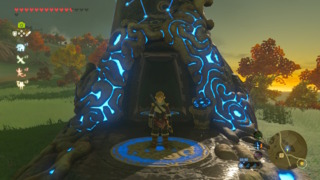
You know that you must gear up to defeat the monstrous Ganon and recover orbs from holy shrines to enhance your stats, but you are left to figure out where those shrines are and what other items may aid you. You soon learn that you can improve your chances against the villain by rehabilitating the four "Divine Beasts", but no one hands you a map of Hyrule, let alone draws on the nests of these demigods. Over the following hours, you'll earn a couple of pieces of equipment from mainline quests. Besides those, your success at all challenges rests on your skills, knowledge, and the items you have discovered and crafted on your travels.
Breath of the Wild is perhaps the game of the last few years to catapult user-created goals and a heavy emphasis on player-made tools into the mainstream. While BotW is liable to be intimidating to a casual audience, it's nowhere near as burdensome on them as an ARK or Outer Wilds. Breath of the Wild manages a balance of approachability and room for audience creation unrivalled in the medium. Its purposeful side-tasks also constitute a stunning counter-punch to the rest of the open-world genre.
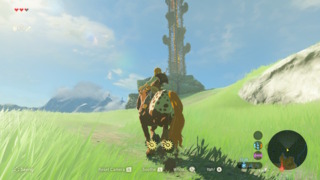
Time and time again, I see games with huge possibility spaces that are less than the sum of their parts. Games where I know I can climb more towers, liberate more strongholds, or guard more VIPs, but in which I recognise those activities won't produce any rewards that feel necessary for my future successes. AAA games want to court big audiences to make big bank, but in a wide enough sample of gamers, you'll find a lot of different tastes for how often you repeat tasks, types of chores, and the length of the experience.
The go-to solution has long been including both compulsory and optional objectives, allowing the player to jigsaw together the game they want. The snag is that if the game is to remain accessible, the rewards from the mainline jobs have to be considerable enough that the player can complete the game using them without any fretful struggle. That means that if the side objectives also offer substantial rewards, the player who invests more time in the game may find themselves overpowered for the difficulty they're playing on. The designers can shrink the prizes for completing optional tasks to subvert that issue, but who wants to be underpaid for their work?
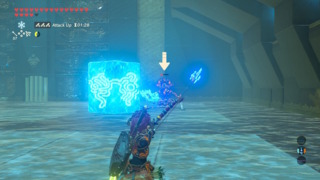
In plenty of cases, I also don't feel excited about running on the same hamster wheels indefinitely. Marketers and some gamers place quantity of content on a pedestal. However, I think many of us feel that a plurality of options in a game is pointless if you're not motivated to engage with them. Breath of the Wild provides that motivation, towards and through its self-guided play, but also via consistently useful rewards. The systems it uses to get us exploring and fabricating often aren't unique to this title. Still, its execution of them and its thoughtful intersection of its mechanics allow Nintendo to deliver a meaningful experience.
Let's get a little friendlier with Breath of the Wild by looking at how it makes loot worthwhile to collect without causing a hyperinflation of our power. Enemies always pack a punch; you're typically only a few hits from death, even with some extra hearts under your belt. And the cliffs you need to climb and plains you need to trek across are often a drain on your stamina meter. In certain climates, you need to protect yourself against searing hot or freezing cold, and when sneaking up on or evading some creatures, you benefit from a stealth or speed boost. Further, various enemies come at you with elemental claws drawn.
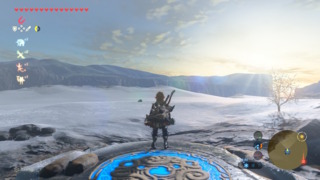
Lengthening your heart and stamina meters with orbs sharpens your combat prowess or improves your endurance when clambering or running, but that process is slow and has limited returns. For example, you can exchange four orbs for one heart container, but it's typical that collecting one orb requires finding a shrine and then completing about three puzzles inside it. And outside of health and stamina, you don't have upgradable stats. There's no "Cold Resistance" to boost if you want to brave the biting blizzards of the Hebra Mountains. If your sword doesn't strike a Hylix hard enough, you can't solve that problem by dumping points into "Attack".
Some advantages, like reinforced defence or increased warmth, you can earn from clothing, but it can take a long time to obtain that layer of protection. Even when you have it, each garment will only convey a slight advantage in one area. You will never find a set that lets you climb faster and insulates against electric shocks. There's no outfit you can coordinate to receive ninja-silent stealth and invulnerability against sweltering heat. When you cannot wholly rely on your clothing or permanent stats to support you, you must turn to the only other source possible: your consumables.
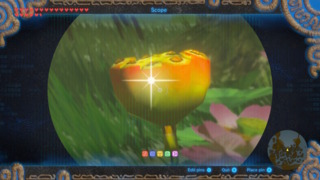
Meals and potions can recover your stamina and temporarily increase your maximum health, stamina, elemental resistances, speed, quietness, attack, or defence. Even weapons and shields are consumables. Once they reach their capacity for dealing and absorbing hits, they shatter in a blaze of light. Arguably, Breath of the Wild employs the much-reviled "durability" mechanic, and yet, it doesn't seem to offend users in this adventure the way it has in so many others. Some gamers don't mind their equipment wearing down with use. Still, when players do become frustrated with it, it's often because durability systems ask for micromanagement from the player. They also dig resource sinks without providing emotional or material rewards for filling those sinks.
There's not a lot of strategy or depth in preventing your gear from failing; you're just checking whether a number is approaching 0. And when your work tools give out, you may have to interrupt enjoyable hunts or quests to do the fantasy equivalent of renewing your driving license. Not exactly thrilling stuff. Where players reasonably expect to be able to spend the resources they earned and find some new empowerment from it, repairing equipment has always been an unrewarding transaction that just gives you back the items you already won.
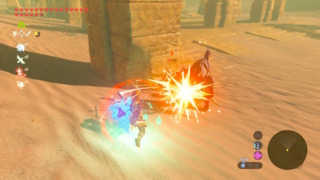
This revolutionary Zelda does things a little differently. Firstly, when your items shatter, they deliver a critical hit and knock back an enemy: a consolation that takes the edge off of losing a weighty club or a hardy shield. Your implement disintegrating doesn't need to be a cause for disappointment; it can lead to a celebratory burst of gratification. Secondly, you can never fix your weapons or shields; you can only find replacements for those that break. So, you'll never spend any significant chunk of change on the same equipment you already own. All your rupees go to new items. Crucially, you can't buy weapons or shields from shops. You can sometimes find elixirs and food among their wares, but these can be a struggle to seek out and only come in limited amounts and types, meaning you have to go out and find or make these things yourself. The play gives you more purpose in the world and a sense of self-investment in the items you use.
Another classic video game problem that BotW solves is players stockpiling goods. You have limited inventory space, and weapons, food, and drinks of the same type generally do not stack. This inhibits you from making one run in which you hoard all the Royal Shields or Stamina Elixirs you need and then never returning to the task of fetching them. Hunts stay varied, and most items remain valuable because you must periodically collect more of them. By association, most monsters and areas long remain worth engaging. Note also that you have different inventories for weapons, shields, and edibles. You can't, say, forgo meal prep to make more room for more swords. So, the developers can keep you filling out each area of your field kit at regular intervals.
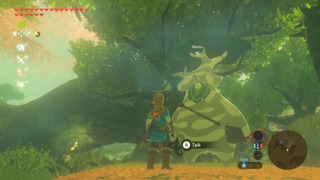
You can pay for increases in the size of each inventory pocket, but these are modest and provide a reason to try your hand at another task. If you solve the Koroks' ambient puzzles, you can win their seeds which you can exchange for more room in your pack. You'll observe that you can't buy your way into more inventory space by performing a non-Korok task. So, these environmental riddles aren't interchangeable with other jobs and merit unique attention.
While we're on the topic of stocking your inventory, we can recognise that some merchants will sell you ingredients for your cooking. Yet, they have a humble variety of products on offer, only carry a handful of the valuable items, and exhibit lengthy pauses before resupplying. The net result is that you won't be able to buy everything you need for a single recipe from the market, and what you do purchase acts as a starter pack. You're probably more likely to go out and fetch the constituents of a meal if you've already got one-third of them rather than if you've got none. You can buy bundles of arrows directly from traders, but again, this is an invitation to gather assets rather than an alternative to doing so. If you're holding arrows, you're halfway to an attack method, but you'll need a bow.
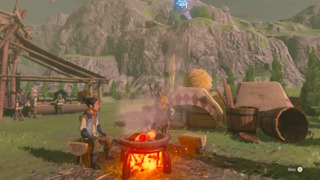
Some quests give you everything you need for a single dinner and even tell you what foods to combine to make it. However, you can only complete a quest once, and therefore, only earn its rewards once. Thus, these kitchen missions function as lessons that likely make you more likely to saute, boil, and BBQ in the future because now you know what meat and veg you require to sizzle up something special. The need to uncover new recipes also keeps you invading buildings and reading books. It's surprising how many games have diegetic text documents that don't use them to impart information useful in the play. To obtain the armaments or ingredients we've discussed, you may need to battle fearsome enemies, weather adverse temperatures, or step silently. Therefore, you have another reason to prepare and loot items and another application for them.
Of course, because you're foraging or crafting your supplies instead of paying vendors for them, BotW can't tax your income as many other releases in its field do. When developers don't regularly garnish player salaries, they can risk their audiences making runaway profits and dominating their opposition. This title avoids overpowering Link via an abundance of expensive items for players to empty their wallets on. Particularly practical for the economy is the Akkala Tech Lab, which offers high-cost consumables suited for squaring off against some of the most lethal enemies, creating a potentially infinite money sink.
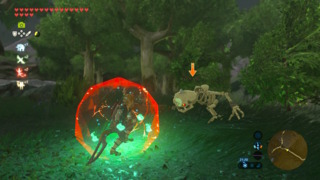
Floating pricy items to stop players from overstuffing their bank accounts can introduce new complications. If a high price tag is balanced against cutting effectiveness, players can become overpowered and incentivised towards repetitive behaviour. All they need to do is grind for cash, and soon they'll be walking out of the store with equipment meant for someone far beyond their level of progression. Yet, setting the power level of expensive items low means players can feel short-changed and as though their investments are disrespected. BotW subverts these extremes by starting the player with a very modest capacity for damage and defence, meaning that comparatively powerful new items don't put Link over the edge and make him a one-man army.
Users being so liable to take damage could make the game prohibitively difficult for many. However, BotW offsets your fragility with a low cost for dying, the ability to warp away from any encounter, and ready access to the basics you'll need for combat and exploration. Shields, weapons, and resources are plentiful; you just need to do the work of finding and collecting the right ones. Note also that this is not a pure numbers game; if this was an RPG where Link and Hyrule's monsters bashed statistics to statistics, muscular equipment would be essential. But Breath of the Wild uses this very Dark Souls logic where it has some leeway to let you get walloped hard because fights rely on your hand-eye coordination and not just automation. If you can dodge out of the way of a nasty lunge or uppercut, it's not unreasonable for the game to leave you with insufficient food or armour to take a volley of injuries.
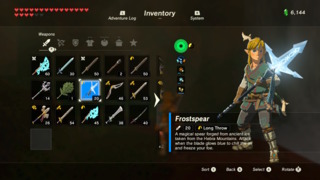
Nintendo also often makes items valuable and prevents them from becoming too beneficial by designing them to be incomparable. The implements you can collect are not necessarily better or worse than each other but different in function. As ever, items become purposeful when they have purposeful applications. Make one weapon strictly superior to another, and the player will only wield the higher-ranking one. Make one weapon preferable in some circumstances and the other preferable in different situations, and the player will have a reason to seek out and retain both. So, what different purposes does Breath of the Wild find for its items?
It relies on the classic game design paradigm of finding elemental niches for items to fill. For example, the Iceblade and Flameblade don't relate in terms of a strict hierarchy; the former is devastating against fire enemies, and the latter against ice. The same applies for all other equipment with a natural effect. But even if a developer has different accessories conveying different elemental advantages, those commodities may still operate by the same mechanics. Whether you're carrying a Flame Staff to melt Wyerds or finding Zap doesn't even scuff a Mudraker, you're still interacting with monsters under the marquee of type-matching systems. It's a similar story if you're using your own elemental resistances to block their attacks. What changes between using your poison resistance and ground resistance is not the structures you're playing with; it's the types placed into those structures. Breath of the Wild's tools don't just employ elemental damage dynamics but hook into all sorts of other systems and status effects to radically expand their potential applications.
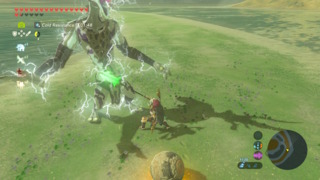
An electrical attack is not just "for water enemies"; it makes a character drop what they're holding. Ice isn't just painful for fiery foes to tolerate; it freezes anyone who has the misfortune to come into contact with it. Fire simultaneously damages and disables, boomerangs will return when thrown, long-handled weapons allow you to attack at a distance, hammers send objects flying, and some spears and swords sail further when hurled. That you can throw melee weapons gives them another function past prodding baddies. You can ignite wooden weapons, and any blazing weapons do more than lend another dimension to the combat. They allow you to clear thorns to clear your path, melt items and enemies out of ice blocks, uncover nooks hidden behind foliage, generate updrafts you can glide on, break open crates without exhausting your weapon's durability, or light fires to cook or sleep by. Bladed weapons can fell trees for lumber, and Korok Leaves can propel rafts across water.
Some bows may fire faster or further than others or shoot multiple arrows simultaneously, and the different arrow types mean any bow can be used to generate any elemental effect. Weapons can be one-handed or two-handed, which is really three different properties in one. It determines their speed, their knockback, and whether you can hold them alongside a shield. Then you have unique unicorn weapons like the Windcleaver, which can literally blow an opponent off their feet or the Master Sword, which doesn't break at all, recharging when exhausted and growing more powerful in and around Hyrule Castle. Chu-Chu Jellies unleash blasts of elemental energy when you shoot them with arrows, and elements will turn Blue Jelly into other forms of jelly, giving a further purpose to fire, ice, and electric items. Even ineffectual weapons have their place because when foes like Keese and Undead go down in one hit, you probably don't want to waste the big guns on them. It's much more economical to swat them away with a rusty claymore or wooden club. They're your medieval rolled-up newspapers.

In another action-adventure, an axe or a mushroom might become vendor trash because you have superior alternatives. In Breath of the Wild, the non-hierarchical positioning of the items means they retain their distinct utilities. There's nothing wrong with some vendor trash, but when that's most of what you're picking up, it can feel like you're effectively collecting the same object over and over, just reskinned. Some games have armouries that approach the systemic flexibility of Breath of the Wild's, but I'm not sure I know another that matches it. And when other games allow their weapons the range of properties that this 2017 Zelda does, they usually come with walls of stats to consider. This information rush can be repulsive to the casual player and runs counter to the minimalist aesthetics that encase a title like BotW. Hyrule avoids shipping items with arm-length stat cards through a union of reservedness and simplicity.
Loquacious UI tooltips are typically necessary because many of the variables RPG items possess exist on a sliding scale. That is, you might have a game where the damage your rifle can do ranges from 0-1,000 and could stop at any number in between. So, for the player to make actionable comparisons between guns, the firearms all have to report their precise damage values. Repeat for every other number that goes into the weapon, from fire rate to magazine size to sell value. In BotW, many attributes of weapons are boolean rather than granular. That is, a weapon is never 7.6 long or 9.1 long; it's just long or short. A weapon either returns when thrown or it doesn't; it can't return 50% or 33%.
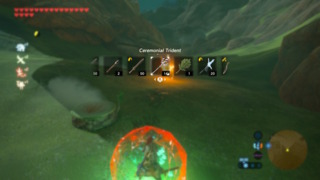
Zelda's implements also don't possess many exceptional traits simultaneously. You won't find a weapon that freezes enemies, and has high durability, and can be thrown further than others, and increases your attack. So, Zelda can get by with short weapon descriptions that only appear when you dive into a menu. In many cases, those descriptions only need mention when a weapon property deviates from an assumed default, and otherwise, don't need to state that property. Beyond those descriptions, the UI slaps a name and maybe an icon on a tool and leaves it at that. This minimalist approach reduces visual clutter and makes the weapon systems easy to understand overall. That means it's easier to pick an implement you want to retrieve.
In some cases, this game can introduce more types of armour and elixirs than its competition because it considers more of the values in its systems up for debate. In most games where you walk a player avatar around a world, metrics like sprint velocity, climbing speed, stealthiness, or swim speed are fixed. BotW opens up new avenues for its items by making these variable figures that the player can modify with the right clothes or consumables. There are greens that will temporarily reduce the noise you make when you move, armour that ups your swim speed, etc. The design further finds applications for its items by having environmental factors contextualise their operation.
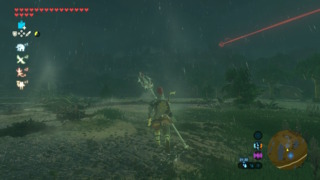
Igniting red barrels causes explosions that burn nearby enemies, but you can also spread fire to monsters by torching grass. You can shock them by placing metallic items near them during lightning storms or having electricity carry through a body of water. If there's a cliff nearby, you might be able to send an assailant flying off of it. Of course, they can turn the same effects back on you. You may also notice how rain extinguishes fires and makes rocks too slippery to climb or how you can use shields to surf down inclines. And then there's nighttime during which the Undead spawn, but if you have the Dark Link set, you will also benefit from a bump to your speed while the Sun is down.
Remember, more applications for items means more reasons for the player to seek out or manufacture them. You can even use some ingredients as bait to catch animals which become ingredients themselves. This complex network of relationships between entities and environments could baffle and irritate the average player. However, Nintendo, ever-aware of the user experience, makes mechanics intuitive by having them mimic real-world interactions. Plenty of games have arbitrary rules like "Bald Bull will spontaneously throw a left hook" or "If you roll a 7, it activates the Robber". "Axes cut down trees" or "Fire melts ice" are not original arbitrary rules participants must learn to play the game but principles from the outside world they're already familiar with.
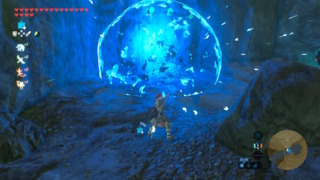
As you may have already realised, giving the player lots of types of items to collect doesn't necessarily mean giving them variation in the tasks that award those items. It's not uncommon to see a game with a zoo of resource-based upgrade trees and crafting systems in which you win all your resources through combat. That flatness in item-gathering isn't objectively sloppy game design. Still, it is refreshing to see an action-adventure in which you have many different tasks to produce various valuables. Appropriating equipment and ingredients in Breath of the Wild can involve combat. Yet, it might also mean sneaking up on skittish critters, hunting wildlife that will flee upon being struck, baiting animals, solving puzzles, blasting open rocks, devising clear routes to climb walls, and employing your powers of observation.
We're not under any doubt by now that BotW has numerous pegs to fill countless holes. But all those holes and pegs need to live somewhere. Hyrule must be vast to accommodate them, but given that items are small and Hyrule is big, the designers are now asking you to retrieve needles from a haystack. In addition to objects and creatures, there are still those sacred shrines to track down, and we need to find a bunch of them. The obvious solution would be for the studio to mark what we need on our maps, but that doesn't make for much of a game. It negates any puzzle element by revealing the solution out of the gate and denies any exploration by setting a direct line to our target.

BotW splits the difference between painting a target on the location of objects and leaving us totally in the dark. Players can locate shrines, creatures, monsters, treasure chests, and items using a radar. The player may select one entity at a time, and if it's nearby, the radar will tell them they're facing it and roughly how close they are, but nothing else. The person holding the joycons plays Marco Polo with the dungeon entrance, deer, or whatever else they're looking for. The radar is only for homing in on an item once you're relatively close, though. To get within the ballpark of these entities, you need to siphon rumours from the NPC gossip mill, or, as long as you're not locating a shrine, you can check the compendium in your magic phone. Because you're picking what your scanner detects, you're explicitly setting a goal.
To get an entry in your phone for an organism or object, or to detect it with your sensors, you first need to take a picture of it. You also can't know where a location listed in your compendium is until you've: A. Visited it, and B. Climbed the tower for its region. So, a functioning radar and an informative encyclopaedia can both carry sentimental value as the products of your hard work. In a Ubisoft game, reaching an observation point to unlock more map is usually a predictable exercise in platforming. BotW shocks the idea back to life by making you struggle a path through tar pits, goblin-filled castles, and more, to reach the skyscrapers. Each tower is not just unique in its construction as a climbing wall but also in the mechanics you have to contend with to reach its apex. Additionally, as you search for one place or item, you're bound to run into other interests in the world. It's one of those concepts that has made it into plenty of open-world titles, but few have as many meaningful encounters out in their environments as BotW. In other works, you typically don't have the reasons to explore nearly as much, so you're not going to make the same volume of discoveries.

There is one more reason that Breath of the Wild's activities feel so purposeful, and it's nothing like anything we've discussed so far. It's standard practice for developers of open-world excursions to pack every square inch of them with a problem to solve. By comparison, Breath of the Wild lets its problems breathe. Hyrule is a land of empty, open space, with points of interest situated relatively far apart. You're not overstimulated by discovering another trinket or task in every cloister, so when you do find a job or item of worth, it's something to cherish.
Breath of the Wild's philosophy in which you're making more instead of having it dumped in your lap is consonant with a broader vision Nintendo had for this game. In almost every Zelda, there's a comfortingly predictable narrative to fall back on: Ganon kidnaps Zelda, Link defeats Ganon, Link saves Hyrule. Every facet of Breath of the Wild is inseparable from its future in which the opposite happened. Ganon emerged victorious and destroyed Hyrule. This spirit of the fallen nation swallows the new design. With most of the towns in the kingdom reduced to dust, there's not a broad enough infrastructure and economy to sell Link everything he needs and direct him to the next dungeon every time. So, he must take it upon himself to create what's missing. He won't find wall-to-wall monsters and treasure chests because most of them were wiped away in the tide of a demon's wrath. So, he must make do with what he has.
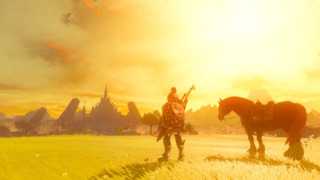
Where Zelda was once cooled in the climate of western fantasy, Breath of the Wild is a warm wind blowing in from the east. The series sheds the constant rousing action of European and US media for the discipline and slow burn of traditional Japanese storytelling. It's not Peter Jackson; it's Kurosawa. And in the dead space between its unassuming villages, in the serene vacuum of its endless plains, we learn that if a hero isn't given the means to achieve their destiny, they can still find empowerment in creating it. Thanks for reading.